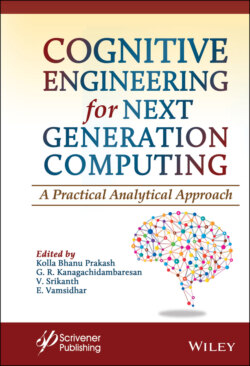Читать книгу Cognitive Engineering for Next Generation Computing - Группа авторов - Страница 59
1.15 Features of Cognitive Computing
ОглавлениеThe motivation behind cognitive computing is the making of processing structures that can take care of confusing issues without consistent human intercession. To execute these functions in business and across the board applications, Cognitive Computing consortium has suggested the features as Adaptive, Interactive, Iterative and stateful, and Contextual.
Adaptive: It is the initial step for building a cognitive application. The system should learn to adapt from the surroundings as humans do. It should be dynamic and always well prepared to gather information, learning the objectives, and updating the requirements and goals. This type of system cannot be designed for a single assignment.
Interactive: In human beings, the brain controls the body by connecting with different and gathering information using the senses. In the same manner, the cognitive application should be able to interact with different elements such as processors, gadgets, databases, users, and cloud services. It should make use of various technologies like natural language processing, machine learning, advanced analytics, deep learning probability and statistics, and big data analytics. For interaction with the users, it uses chatbots.
Iterative and stateful: The framework must be able to recall the past interactions in a procedure and return the information whenever necessary. It ought to have the option to characterize the issue by posing inquiries or finding an extra source. This element needs a cautious utilization of the information quality and approval procedures to guarantee that the framework is constantly furnished with enough data and that the information sources it works on to convey solid and state-of-the-art input.
Contextual: They should comprehend, distinguish, and extract relevant components, for example, implications, suitable domains, position, time, guidelines, client’s profile, procedure, errand, and objective. They may draw on various wellsprings of data, including both organized and unstructured computerized data, just as tactile sources of information.
